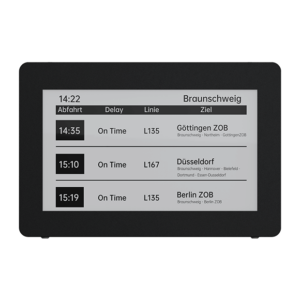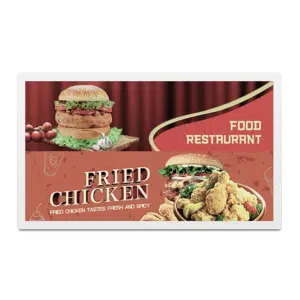Comparing Electronic Paper Displays with OLED and LED
Comparing Electronic Paper Displays with OLED and LED
Blog Article
Display engineering is becoming an intrinsic part of our day-to-day lives, showing in from smartphones and e-readers to large-scale advertising panels. One of the diverse selection of E-ink screen display, OLED (Organic Light-Emitting Diodes), and LED (Light-Emitting Diodes) have emerged as some of the very most generally mentioned options. While each type acts its own unique purpose, their differences in characteristics, efficiency, and use instances cause them to become suitable for unique applications. Let's take a deeper go through the crucial faculties of those display technologies.
Electronic Paper displays (ePaper)
Electronic Paper displays, also known as ePaper or Electronic Ink displays, are made to imitate the appearance and readability of standard Ink on paper. That technology uses tiny microcapsules containing priced black and white contaminants suspended in a definite fluid. When an electric area is applied, the particles move to either side of the tablet, making an obvious image. The picture stays static until another electrical field is applied, which makes it ideal for presenting text-based content such as books, magazines, and e-readers.

One of many principal features of ePaper displays is their low energy consumption. Unlike conventional LCD
Understanding Electronic Paper displays
An electric Paper display (ePaper) mimics the looks of Ink on paper. Unlike standard monitors, ePaper utilizes their ability to reflect ambient gentle as opposed to emitting their own. That engineering not merely reduces eye strain but also provides unmatched readability in sunlight, which makes it well suited for e-readers and electronic signage solutions.
One standout function of ePaper displays is their extremely minimal energy consumption. Since they only use energy when adjusting content, ePaper screens are highly efficient and suited to battery-powered devices. But, their renew rates are slower in comparison to OLED and LED displays, restraining their applicability to static or minimally active content.
OLED displays
OLED displays are noted for their gorgeous visual quality, offering lively shades, deep greens, and outstanding contrast. Each pixel in a OLED display emits its own gentle, reducing the necessity for a backlight. That not merely permits thinner, more light types but also effects in greater power effectiveness in comparison to LED in certain scenarios.
One important advantageous asset of OLED displays is their flexibility. They can be manufactured in curved or flip-up types, creating them popular in cutting-edge smartphones and wearable devices. However, OLED monitors come with problems, such as for example susceptibility to burn-in and smaller lifespans compared to different technologies.
LED displays
LED displays, the most frequent of the three, count on a backlit system to gentle their pixels. While not as visually striking as OLED 13.3" epaper display, LEDs are very durable, long-lasting, and cost-effective. These characteristics make them suitable for a wider range of purposes, including TVs, computer monitors, and outdoor advertising.
LED displays generally perform properly when it comes to brightness, creating them a great choice for situations with high surrounding light. Nevertheless, they fall short in achieving the exact same heavy contrast and shade reliability as OLED technology.

Final Contrast
When determining between ePaper, OLED, and LED displays, the option depends mainly on the supposed purpose. For static content like examining or signage, ePaper excels with its minimal energy utilization and large presence in natural light. OLED shines in programs where vibrant colors and flexibility are paramount. Meanwhile, LED stays a trusted and cost-efficient answer for a variety of general-purpose needs.
Each display engineering provides something unique to the dining table, ensuring that there's an ideal choice for every situation. Understanding these variations might help customers and corporations make knowledgeable decisions that match their specific display requirements. Report this page